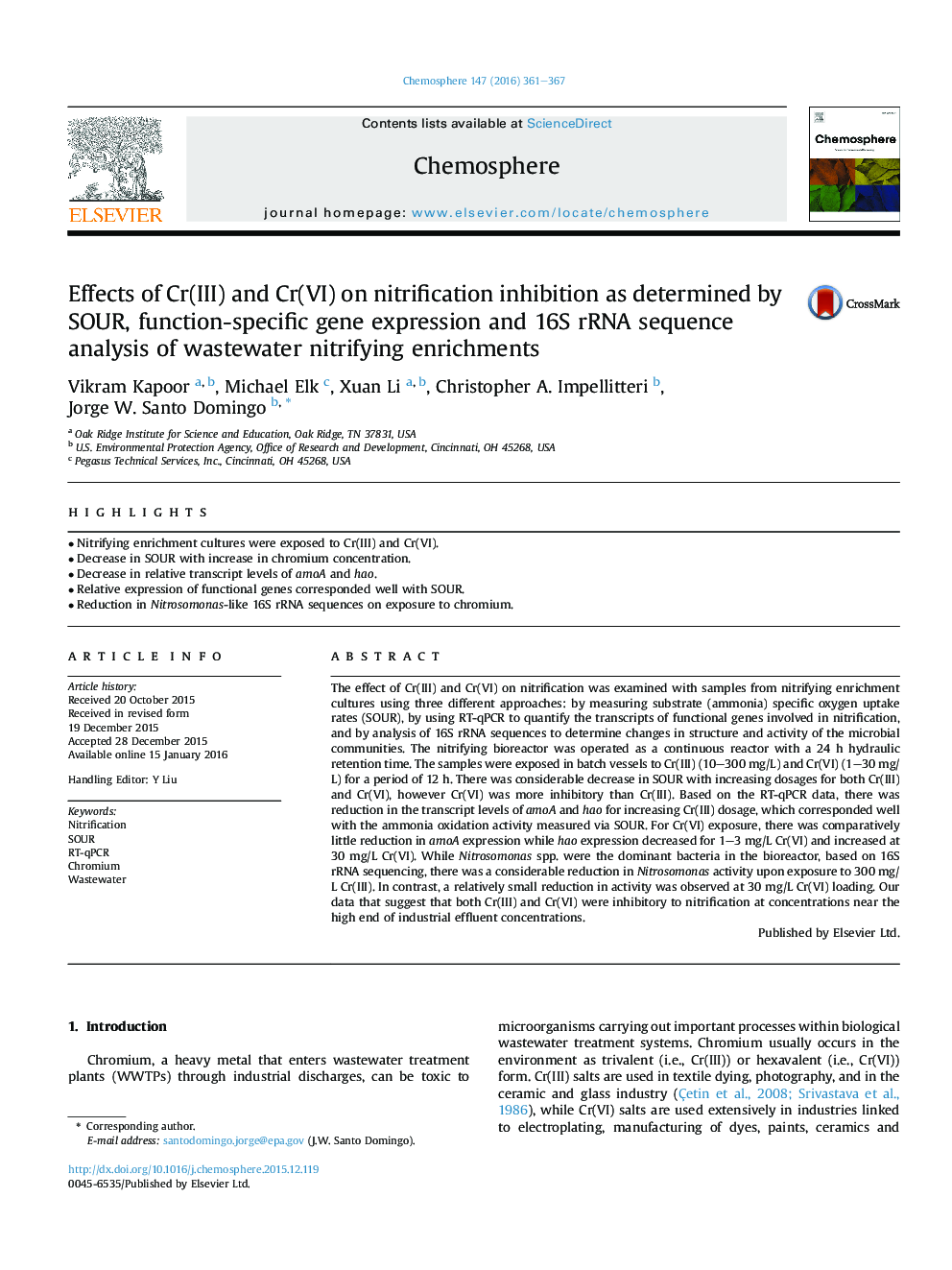| کد مقاله | کد نشریه | سال انتشار | مقاله انگلیسی | نسخه تمام متن |
|---|---|---|---|---|
| 4408059 | 1618824 | 2016 | 7 صفحه PDF | دانلود رایگان |

• Nitrifying enrichment cultures were exposed to Cr(III) and Cr(VI).
• Decrease in SOUR with increase in chromium concentration.
• Decrease in relative transcript levels of amoA and hao.
• Relative expression of functional genes corresponded well with SOUR.
• Reduction in Nitrosomonas-like 16S rRNA sequences on exposure to chromium.
The effect of Cr(III) and Cr(VI) on nitrification was examined with samples from nitrifying enrichment cultures using three different approaches: by measuring substrate (ammonia) specific oxygen uptake rates (SOUR), by using RT-qPCR to quantify the transcripts of functional genes involved in nitrification, and by analysis of 16S rRNA sequences to determine changes in structure and activity of the microbial communities. The nitrifying bioreactor was operated as a continuous reactor with a 24 h hydraulic retention time. The samples were exposed in batch vessels to Cr(III) (10–300 mg/L) and Cr(VI) (1–30 mg/L) for a period of 12 h. There was considerable decrease in SOUR with increasing dosages for both Cr(III) and Cr(VI), however Cr(VI) was more inhibitory than Cr(III). Based on the RT-qPCR data, there was reduction in the transcript levels of amoA and hao for increasing Cr(III) dosage, which corresponded well with the ammonia oxidation activity measured via SOUR. For Cr(VI) exposure, there was comparatively little reduction in amoA expression while hao expression decreased for 1–3 mg/L Cr(VI) and increased at 30 mg/L Cr(VI). While Nitrosomonas spp. were the dominant bacteria in the bioreactor, based on 16S rRNA sequencing, there was a considerable reduction in Nitrosomonas activity upon exposure to 300 mg/L Cr(III). In contrast, a relatively small reduction in activity was observed at 30 mg/L Cr(VI) loading. Our data that suggest that both Cr(III) and Cr(VI) were inhibitory to nitrification at concentrations near the high end of industrial effluent concentrations.
Journal: Chemosphere - Volume 147, March 2016, Pages 361–367